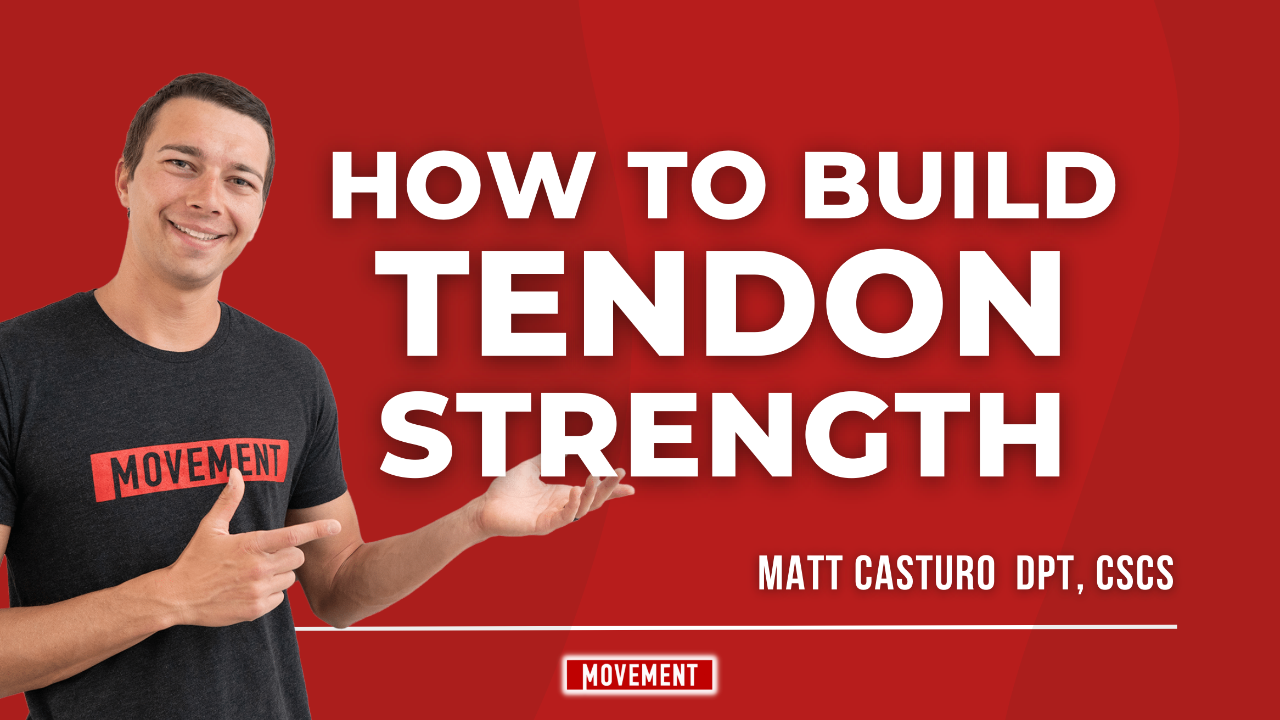How to Build Tendon Strength
Jul 19, 2023
Edited by: Danielle Abel
We've noticed that most coaches are comfortable building muscle, but building tendon strength is a gray area. It only makes sense, most certification programs discuss
So, in this article, we'll be breaking down what to focus on when trying to build tendon strength, along with what to not waste your time on, so you can be more effective and efficient when programming exercises for your clients who need tendon strengthening.
*Keep in mind this article is written from a perspective of dealing with strong, athletic individuals and how to help them improve their tendon strength.
Tendons Take Time
You will see results as quickly as you would with fat loss, muscle gain, or even strength gains. Tendons can take up to 12 weeks to show strength improvements. This is because tendons are a slow-growing tissue, and they're stiff.
You might be thinking, "do I want stiff tendons?" The answer to this is, yes, you want strong, stiff tendons! When it comes to muscles, we don't want stiff muscles, but with tendons, we want them to be stiff. Stiff, rigid tendons help transmit forces more efficiently between bones and muscles.
So overall, be patient; it might take more time than you think to build up your or your athletes' tendon strength.
Treat the Donut, Not the Donut Hole
What we mean by "treat the donut, not the hole" is that part of a damaged tendon is considered pathologic, which means it's tissue that isn't healthy and can't work effectively. Some practitioners will focus on the damaged tissue by applying ice, heat, iontophoresis, etc. However, if you don't strengthen the healthy tissue, you will probably wind up with more damaged tissue in the future.
A better approach is to strengthen the healthy surrounding tissue using heavy loading and progressive strengthening.
Appropriate Loading
It's not realistic to think that an athlete with tendon issues isn't going to have some pain. We don't want the athlete to be in severe pain, but having pain anywhere from 3-4 on a scale of 1-10 isn't a bad thing. In fact, the literature shows that some amount of pain actually promotes more rapid healthy of tendons.
The key to determining appropriate loading is to evaluate whether or not your athlete is still having pain 24 hours after tendon strengthening exercises. If pain is still present, you may need to dial back on the volume or intensity.
- Decrease sets and/or reps
- Decrease the load applied to the tendons
If you're using isometric exercises, you might start off with 3, 4 or 5 sets of 20-30 seconds. If you're doing movements where the joint is moving through the full range of motion, concentric, isometric, or eccentric, 20 reps or less might be a good place to start.
- Step downs
- Split squats
From a frequency perspective, you may be able to get away with isometric training every day. However, heavy, slow, resistance training may be better performed every other day.
Reintroducing Plyometrics
If your athlete is used to doing plyometrics, you might be wondering when would be a good time to incorporate these again. The biggest thing to keep in mind is that you'll want to add these back in slowly, and progressively. For example, don't start them off by going right into single-leg tuck jumps.
- Pogo Hops with Band Assistance
- Bodyweight Hopping or Skipping
- Loaded Jumps
- Depth or Drop Jumps
Programming Isometrics
Isometrics, where the athlete holds resistance in a fixed position, are great for building tendon strength. Plus, isometrics are often very well tolerated. You can get creative with isometrics too. For example, these can be done at home if your athlete wants to be able to incorporate them outside of the gym.
For isometrics it may be helpful to start with bodyweight first, to determine tolerance, and then build up from there with bands, cables, and machines. Here are some examples of different isometrics you might consider:
- Isometric Wall Sit
- Isometric Spanish Squat
- Isometric Leg Extension
- Isometric Calf Raise
Heavy Loads of 85% of 1RM or Greater are Best
Depending on where your athlete is in rehab, you may need to start them out with bodyweight exercises or exercises using bands or cable machines. However, eventually you'll want to add heavy loads once they can tolerate them.
As mentioned above, you'll know when your athlete can tolerate them because you can tell if they're still having pain 24 hours later.
To make meaningful increases in strength via collagen synthesis within the tendon, you must introduce heavy loads of at least 85% of their 1RM. As mentioned above, tendons are stiff, so we must deliver a high enough load to stimulate a training adaption for them to be broken down, repaired and remodeled even stronger.
Want access to more educational information & resources from the Movement System? Be sure to subscribe to our newsletter below for updates, exclusive content, and new offers.
Stay connected with news and updates!
Join our mailing list to receive the latest news and updates from our team.
Don't worry, your information will not be shared.
We hate SPAM. We will never sell your information, for any reason.

